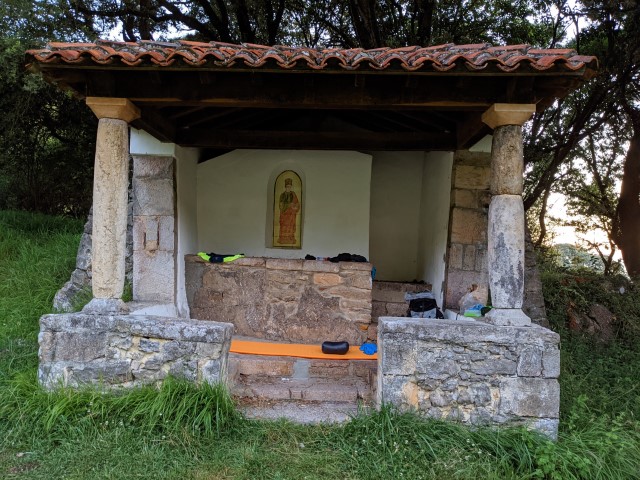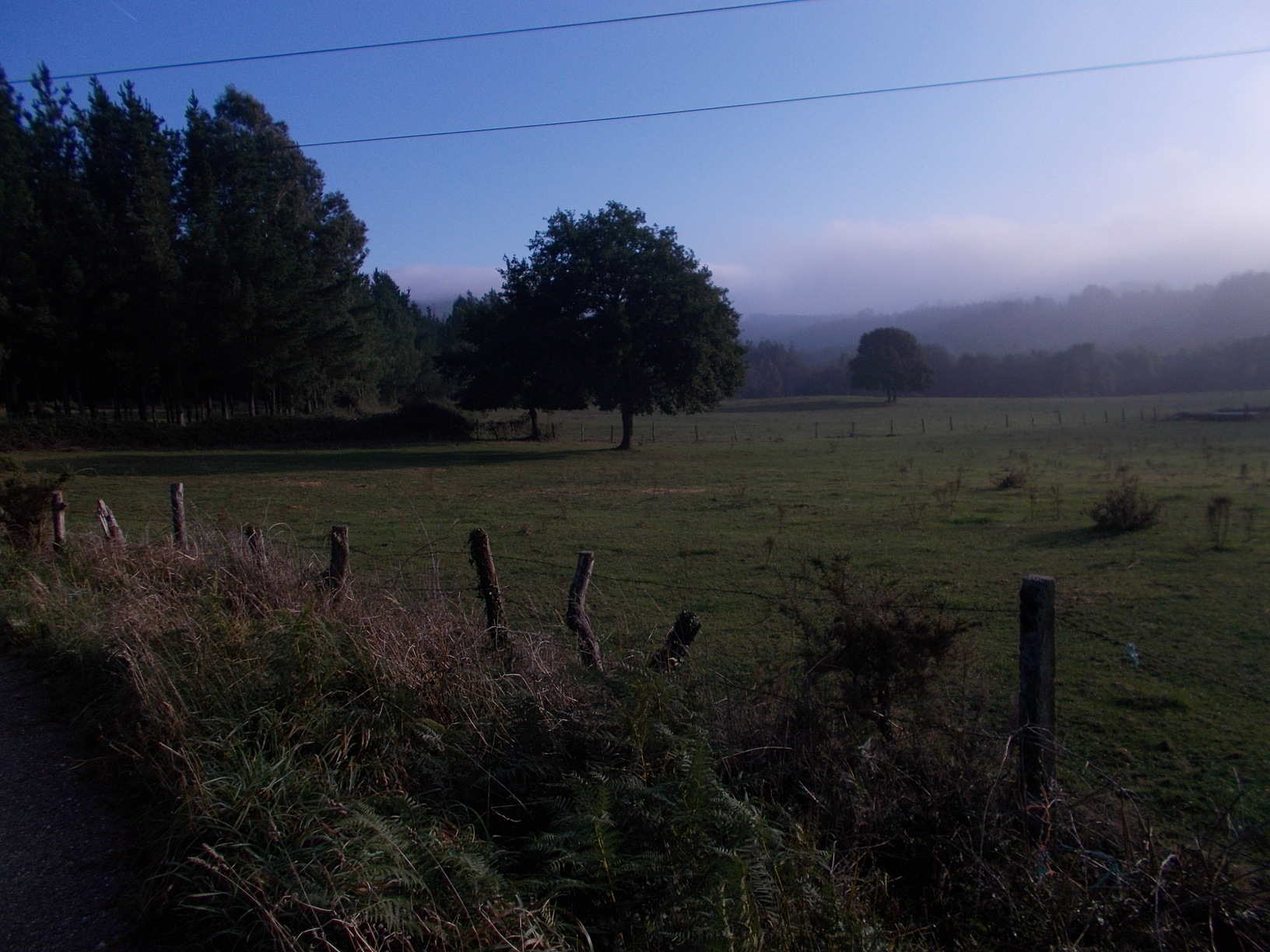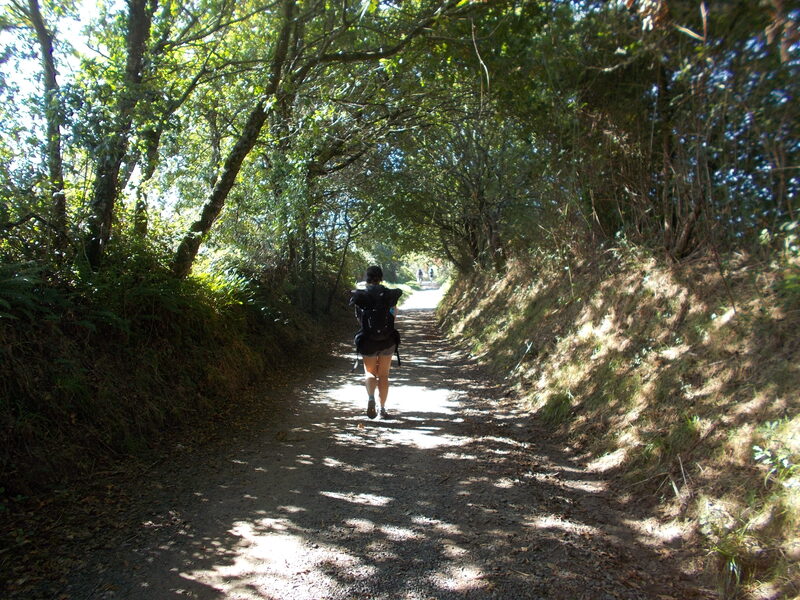Many people tend to think that pilgrims do not camp while walking the Camino. Why should they, after all, with so many nice pilgrim hostels around? In my experience, at least one in every fifty pilgrims camps on the way, either most of the time, or occasionally, from one of the following reasons:
- They are walking on budget and cannot afford to pay for a bed every night.
- Walking with a dog, they aren’t allowed to the majority of pilgrim hostels, and hence have no other option to camping.
- They do not like to share close quarters with so many people (and always at least one snorer, if there isn’t an entire concert going on in the night :)).
- They simply prefer camping and sleeping outside to staying inside.
All these reasons are valid in my book, though some people may not agree with me. Anyway, I will analyze the subject of camping on the camino on the following lines, from both legal and practical perspective. Let’s go!
Table of Contents
Is it officially legal to camp in Spain in the wild (outside of official camping places)?
The answer to this question isn’t as straightforward as it seems. First of all, it makes a big difference whether you pitch a tent or stay just under the roof (of an abandoned church, chapel, or some square) in your sleeping bag.
Staying outside in a sleeping bad is 100% legal in Spain. It cannot be any otherwise, with close to 40,000 homeless Spaniards (and many foreigners) living in the country. These people also have to sleep. When they do not have a warm place inside, they stay outside. Hence if you prefer bivouacking to camping, and walk one of the drier caminos (that means not one where it rains every other day), you are good to go.
Camping in a tent is officially forbidden in Spain, in any form, and any space, outside of official camping places (both organized and unorganized). You can face a fine up to 1,000 euro, though in reality such fines are super rare… Most of the time the police will simply kick you out in the middle of the night (which also isn’t a very pleasant experience to say the least), and perhaps ask you to pay a smaller fine, such as fifty or hundred euro. This is the legal framework, but how it works in reality?

– “Completo”, meaning full. You will see these signs on many albergues during the high season, at least on the popular Caminos. When places are full, pilgrims often have no other option to staying outside.
Public beaches are the worst places to camp on the Camino
Many people dream of sleeping on the beach while walking Camino del Norte, going back to the hippie era. It sounds romantic to pitch a tent in a sand, enjoy a sunset, and fall asleep to the healing sound of the waves of the Atlantic Ocean. It isn’t the best option, however, unless you really know what you are doing, and what beach to pick.
Spanish police regularly patrols touristic beaches at night, and also many locals aren’t happy to see tents there, especially if they run a paid camping place nearby. Which is the case with many beaches on the northern coast of Spain. Camping on such a beach, I’d say you have a fifty percent chance of getting away with it. Which isn’t worst, and you can give it a shot, but I suggest you to opt for another camping spots on the Camino.
Smaller beaches, places that are hard to access by car, and little bit away from both the cities and the trails, are your best bet for camping, at least if you dream of nights on the beach. Such places still exist in Spain, but you’ll often have to make a small detour from the official way to reach them. In our free guide on Camino del Norte, we provide a list of fitting camping places (both organized and wild, including good beaches for camping) for each stage of the walk, all the way from Irun to Santiago de Compostela. I recommend you to get through it or check it regularly while walking to make sure you pick the best camping places.
You are pretty safe in the mountains and off the trails
Wild camping is officially forbidden also in the mountains, but in my experience, and judging by talks with other pilgrims and hikers I met in Spain, nobody will bother you, let alone the police. They won’t drive into some deserted area just to check if some crazy pilgrim isn’t camping there. So if you walk San Salvador, or Primitivo, or Lebaniego, you can camp wherever you want, as long as you aren’t too close to the village or too much on the eyes.
Having said that, remember that not all caminos offer such places with privacy. Spain is full of private properties, and this includes forests or even entire mountains (whether you believe it or not, a mountain can be a private property in Spain :)), and I would not suggest you jumping over fences just because you see a nice camping spot behind that fence. If there is a fence and the place is private, you should go and look for some other shelter for the night.

– Mountainous caminos such as Camino de San Salvador (Leon – Oviedo) are great for wild camping. Officially it is forbidden to camp there, but as you can imagine, nobody (let alone police) will go up in the night looking for campers…
Camping next to albergues
Another slightly controversial alternative is camping right next to the albergue, on their lawn. Officially it isn’t allowed, but I’ve seen that at least fifteen times, so I guess police doesn’t care much.
The practice is popular with people who walk their camino with a dog. Dogs aren’t allowed to 95% of all pilgrim hostels in Spain. However, they will often let you sleep outside, in your tent, with the dog, while at the same time you can benefit from the services an albergue offers–hot shower, washing your clothes, eating communal dinner. Do not fancy this alternative, however, if your primary reason for camping is saving money. Because they will always charge you, and in most cases the full price. Still, if you aren’t on a budget and want to do the pilgrimage with your beloved companion, camping in a close proximity of an albergue is a great option.
* May also interest you: Is donativo albergue free?
Sleeping under the roofs of churches and other buildings
A patio of a church or some other building is the most common sleeping place for people who actually do not find a place in an albergue. This has happened to me on multiple occasions (probably more than ten times), and you are likely to experience it at least once, unless you plan to book everything in advance, which is a risky strategy, because you do not know what the weather will be like, how you will feel on each day, etc.
Anyway, I haven’t been sent away from such a sleeping place a single time, and it seems that Spanish authorities tolerate it. After all, they are aware of the pilgrimage, and also that in a high season people may struggle to find a bed. In summer of 2021, I remember a night when 200 people slept in the square of Portomarin, simply because all albergues and hotels were full. I wasn’t there at that night (no doubt it was an interesting experience) but there were rumors all around on the French Way, with everyone trying to book something in advance, especially in Portomarin and surrounding locations…

– This small chapel 50 meters away from the ocean hosted me twice on Camino del Norte. It is three kilometers away from the trail, but definitely worth a detour every time, for a peaceful magical night outside… You can find such chapels and churches on every single pilgrimage route in Spain, either directly on the way, or doing some detour.
Official camping places in Spain, camping on different caminos
The availability of official camping places in Spain depends a lot on the way you walk. Camino isn’t meant for pilgrims with tents. Pilgrims are supposed to sleep in pilgrim hostels (albergues). Hence you will find camping places in locations that attract also tourists and holidaymakers, and such places are much more frequent on the coast than anywhere else in Spain. Camino del Norte is your best bet if you want to sleep in official and organized camping places, with everything that belongs to them (toilets, hot shower, etc). In our Guide on Camino del Norte, you will find a list of official camping places for each stage of your walk, all the way from Irun to Santiago.
Camino Frances is probably the worst camino for camping (unless we talk about Ingles, but that one isn’t a popular alternative). Speaking about the French way, you will find good places to camp the first few days in the Pyrenees. The problem is though that blizzards and storms with hailstones (sometimes as big as a fist of a child) are very common in the Pyrenees, and they often come in the night. Believe me, you do not want to find yourself in such a storm in the middle of a night in your tent, let alone sleeping under the stars in your sleeping bag… After the Pyrenees you’ll face other obstacles with camping, such as struggling to find any public place to camp.
Camino del Norte is better for wild camping, but it is important to do some planning at least one day in advance (or checking the fitting spots in our free guide on this way), because sometimes you may walk on a 20km stretch full of roads and buildings, without a single place suitable for pitching a tent.
Primitivo offers some nice spots, but you should always check weather forecast. Storms with hail aren’t uncommon here either. Via de la Plata offers many good spots for camping, especially in Andalusia and Extremadura, though at times you may struggle to find a place that’s protected from the eyes of passersby (of course you can always wake up early in the morning and pack your tent to minimize the chances of confrontation). Walking lesser known and more mountainous ways you won’t find it hard to locate a good camping spot on any night.
Final thoughts
It is a complete myth that pilgrims cannot camp on the Camino. You will find many people carrying a tent, and they definitely do not carry it just because they wanted to make their backpack bigger :). If you can, however, I suggest you to stay in pilgrim hostels. Albergues are places of meetings where new friendships are formed, and it is also good to support the people running them.
If you decide to camp, however, you can definitely do it. Just make sure to avoid public beaches, pitch your tent in a place protected from sight, and consider also camping next to an albergue, especially if you walk with a dog. Staying in official camps is also an alternative, especially on Camino del Norte where you will find many such camping places. Last but not least, if you aren’t sure or cannot find any good place to pitch a tent, you can always sleep under the roof of some chapel or church–just like medieval pilgrims did, and just like I enjoy doing :).
May also interest you:




![Ultralight Packing List for Camino de Santiago [2025 Edition]](https://caminolovers.com/wp-content/uploads/2022/03/altra-shoes-640-x-480.jpg)


